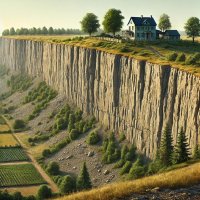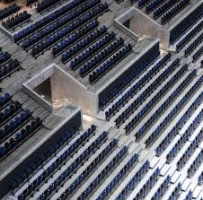jar546
CBO
An escarpment is a steep slope or long cliff that results from erosion or faulting, separating two relatively level areas of differing elevations. These prominent geological features can be found in various landscapes and have a significant influence on the geography and ecology of a region. Characteristically, escarpments have a sharp incline, making them notable landforms. There is a noticeable difference in elevation between the land at the top of the escarpment and the land below. Escarpments can form due to erosion, where softer rock layers are worn away, leaving harder layers exposed, or through tectonic activity, where faulting causes a vertical displacement of the earth's crust.
The term "escarpment" is explicitly mentioned in the International Residential Code (IRC) under section R301.2.1.5, which deals with topographic wind effects. According to this section, "Wind speed-up effects shall be included in the design calculations where topographic features such as ridges, escarpments, and hills cause an increase in wind speed." This highlights the importance of accounting for increased wind speeds due to topographic features like escarpments when designing buildings. Escarpments can significantly influence local wind patterns, leading to higher wind pressures on structures, and thus, it is crucial to consider these effects to ensure the structural integrity and safety of buildings in such areas. Many figures in this IRC section illustrate what an escarpment looks like and its impact on wind speed and building design.
Recognizing and understanding these features within the context of the IRC is essential for ensuring safe and effective building practices.

The term "escarpment" is explicitly mentioned in the International Residential Code (IRC) under section R301.2.1.5, which deals with topographic wind effects. According to this section, "Wind speed-up effects shall be included in the design calculations where topographic features such as ridges, escarpments, and hills cause an increase in wind speed." This highlights the importance of accounting for increased wind speeds due to topographic features like escarpments when designing buildings. Escarpments can significantly influence local wind patterns, leading to higher wind pressures on structures, and thus, it is crucial to consider these effects to ensure the structural integrity and safety of buildings in such areas. Many figures in this IRC section illustrate what an escarpment looks like and its impact on wind speed and building design.
Recognizing and understanding these features within the context of the IRC is essential for ensuring safe and effective building practices.


